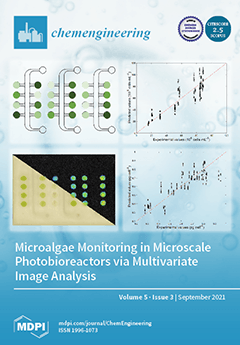The global net emissions of the Kyoto Protocol greenhouse gases (GHG), such as carbon dioxide (CO
2), fluorinated gases, methane (CH
4), and nitrous oxide (N
2O), remain substantially high, despite concerted efforts to reduce them. Thermal treatment of solid
[...] Read more.
The global net emissions of the Kyoto Protocol greenhouse gases (GHG), such as carbon dioxide (CO
2), fluorinated gases, methane (CH
4), and nitrous oxide (N
2O), remain substantially high, despite concerted efforts to reduce them. Thermal treatment of solid waste contributes at least 2.8–4% of the GHG in part due to increased generation of municipal solid waste (MSW) and inefficient treatment processes, such as incineration and landfill. Thermal treatment processes, such as gasification and pyrolysis, are valuable ways to convert solid materials, such as wastes into syngas, liquids, and chars, for power generation, fuels, or for the bioremediation of soils. Subcoal™ is a commercial product based on paper and plastics from the source segregated waste that is not readily recyclable and that would otherwise potentially find its way in to landfills. This paper looks at the kinetic parameters associated with this product in pyrolysis, gasification, and combustion conditions for consideration as a fuel for power generation or as a reductant in the blast furnace ironmaking process. Thermogravimetric Analysis (TGA) in Nitrogen (N
2), CO
2, and in air, was used to measure and compare the reaction kinetics. The activation energy
and pre-exponential factor
were measured at different heating rates using non-isothermal Ozawa Flynn Wall and (OFW) and Kissinger-Akahira-Sonuse (KAS) model-free techniques. The TGA curves showed that the thermal degradation of Subcoal™ comprises three main processes: dehydration, devolatilization, and char and ash formation. In addition, the heating rate drifts the devolatilization temperature to a higher value. Likewise, the derivative thermogravimetry (DTG) results stated that T
m degradation increased as the heating rate increased. Substantial variance in
was noted between the four stages of thermal decomposition of Subcoal™ on both methods. The
for gasification reached 200.2 ± 33.6 kJ/mol by OFW and 179.0 ± 31.9 kJ/mol by KAS. Pyrolysis registered
values of 161.7 ± 24.7 kJ/mol by OFW and 142.6 ± 23.5 kJ/mol by KAS. Combustion returned the lowest
values for both OFW (76.74 ± 15.4 kJ/mol) and KAS (71.0 ± 4.4 kJ/mol). The low
values in combustion indicate shorter reaction time for Subcoal™ degradation compared to gasification and pyrolysis. Generally, TGA kinetics analysis using KAS and OFW methods show good consistency in evaluating Arrhenius constants.
Full article





